Experience with Drones Prepares High School Students for the Future of Farming
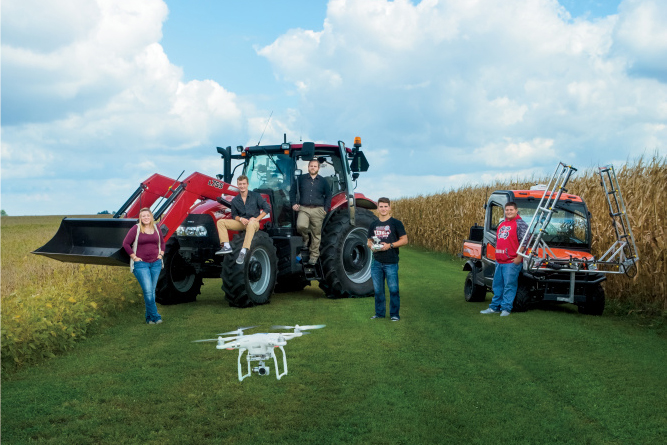
When you have a bird’s-eye view of a problem, you have a unique perspective for tackling it. Just ask the drone-flying agriculture science students at North and South Newton high schools.
“Having the chance to get hands-on training with drones now is beneficial because we’ll be well-prepared to use them to solve problems in the field,” says John McGrew, a senior at South Newton. “Figuring out the technique for flying the drone is difficult at first, but it doesn’t take long to get the hang of it.”
And many of them have gotten the hang of it since the schools acquired drones and other equipment two years ago, pushing agricultural education to even more impressive heights.
“Thanks to the vision of committed community members who raised $115,000, as well as a grant from the state that provided a three-to-one match, the schools were able to develop a curriculum and provide state-of-the-art precision ag technology for our students,” says Matthew Armbruster, the agriculture science and business teacher at South Newton.
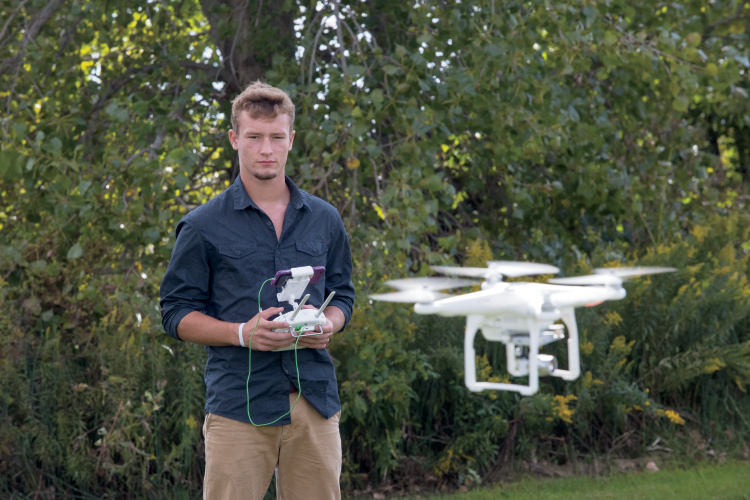
The equipment includes two different types of drones: one that takes photos and videos and another that collects infrared data on the fields. In addition, a new tractor equipped with GPS guidance systems gives students a chance to learn how to use the autodriving and mapping features for planting and spraying, mirroring what farmers do on their own fields. Each school has its own complement of equipment.
Why Drones?
“With autosteering, the students learn to determine the boundaries and set the pattern to ensure precision,” Armbruster says. “The technology automatically keeps track of where you’ve planted, so you don’t overplant or underplant. It also allows you to see on the map where you’ve sprayed, and the individual nozzle will shut off and on automatically so you put down only what you need to.”
Drones Offer Sky-High Opportunities
How does such precision impact a farming operation? It creates efficiencies in terms of time and costs, and ensures environmental stewardship, Armbruster says.
How does it impact his students? “Seeing those benefits firsthand from behind the wheel of a tractor provides students with valuable, practical knowledge that reinforces what they learn in the classroom and their internships,” he says.
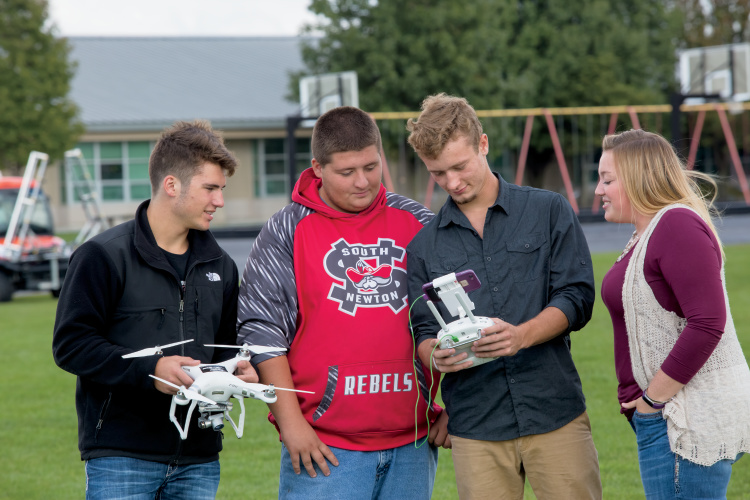
Neil Geswein, another South Newton senior, agrees. “We learn the basics of the technology here, and then we get more in-depth experience with it in our internships,” he says. “We bring that additional knowledge back to the class and share it.”
That benefits everyone, including Armbruster, who continues to develop the curriculum, and the students, who have a head start in their future agricultural careers, whether it’s returning to the family farm or consulting for other farmers.
“There are some colleges offering this kind of experience, but not many high schools,” he says. “Our goal is to continue to build the curriculum, even looking at how drones might be used beyond the fields, for example, in the areas of livestock or forestry.”
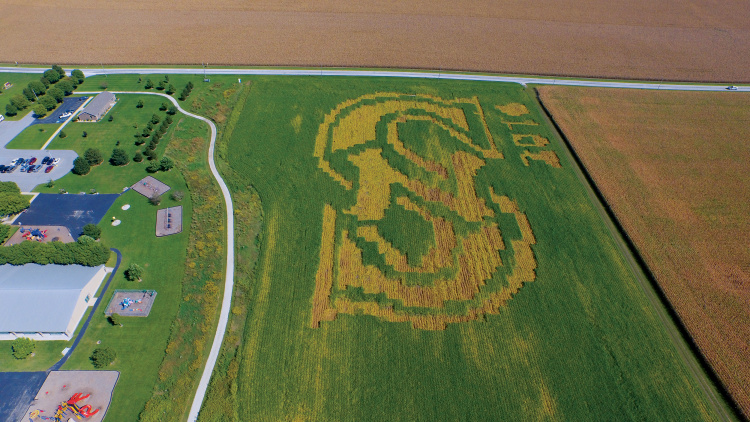
South Newton High School logo photograph taken by drones
That gives Newton’s students some sky-high opportunities. “My vision for the precision ag class is that our students will have the ability to use the technology to help on their family farms or to be a productive employee for another ag entity. Their early exposure will prepare them not just for the next few years but for the technological advances to come in the future.”




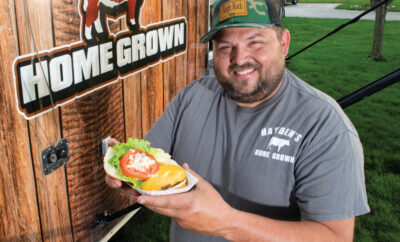




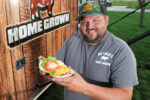
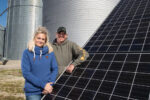


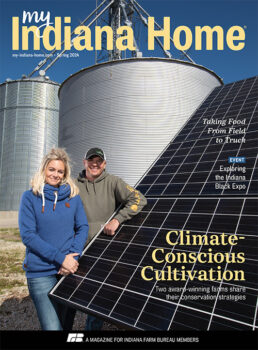 My Indiana Home is produced for Indiana Farm Bureau members. Our mission is to connect you with the food you eat, the Indiana farmers who grow it and a rural lifestyle that is uniquely Hoosier.
My Indiana Home is produced for Indiana Farm Bureau members. Our mission is to connect you with the food you eat, the Indiana farmers who grow it and a rural lifestyle that is uniquely Hoosier.
Leave a Comment